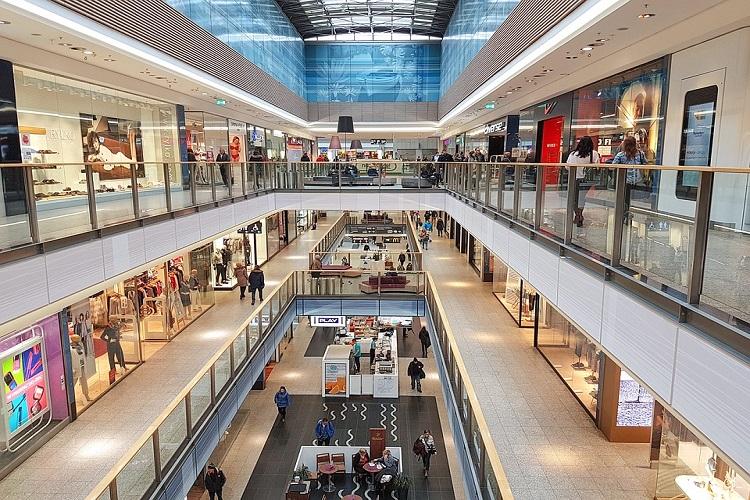
In today’s modern retail environment, information is available everywhere. Consumers are well informed and expect personalized experiences when they shop. This means that the table stakes have changed – retailers now need an IT strategy that expands well beyond a web presence into all areas of their business. Fortunately for retailers, technological innovations across cloud computing, data analytics and AI are enabling a new era, where it’s possible to gain ten times the insights in one-tenth the time. Retailers that embrace these technologies are well positioned to not only lead their industries, but also take share from the laggards.
On the backdrop of this, as per Microsoft, there are 5 technology trends that will dominate the retail sector in 2019:
- More AI-powered retail applications will gain adoption as the technology matures: Retailers are already utilizing AI to deliver a highly personalized experience. High-end retailers are using AI powered devices to increase their knowledge of customers to deliver better products and services. By employing types of AI like machine learning, companies can begin to anticipate customers’ requests and desires, positioning themselves to build a stronger relationship by tailoring offers and interactions to each specific customer. AI and machine learning can also play a significant role in helping retailers optimize their supply chain. The retailers are also using Artificial Intelligence to leverage the benefits of voice assistants like Cortona, Alexa, Facebook Messenger, etc. By 2019, about 40% of retailers will develop a customer experience architecture supported by AI, boosting conversions up to 30% and revenue by 25% through hyper-micro personalization.
- Voice Technology: Voice assistants can prove to be a game changer in the retail industry in the year 2019. Voice technology integrated with AI helps consumers discover products faster, hence changing our shopping behavior. With the push for 5G connectivity, number of connected devices and connected people will rapidly grow which in turn will support the growth of voice commerce. Voice commerce will help customers in browsing and choosing products with the help of voice assistants present in the market today. Merchants will have the opportunity to put themselves on the radars of target customers. The retailers who have set up a proper online listing and optimized their site local search will stand a good chance of being recommended to the customer.
- Internet of Things: The internet of things has already gained momentum in the year 2018, however in 2019 the technology will move beyond the hype cycle-enabling retailers to turn possibility into reality. Many retailers have already launched pilots for their stores as they view IoT as a backbone of data-driven economy. The data collected through various IoT devices can be used to study the consumer behavior and preferences. The technology has the potential of taking personalization in retail to a whole new level. IoT along with machine learning models and data visualization can create differentiated and highly personable experiences and products. For example, Nordstrom Rack is using in-store beacon technology from Footmarks, built on the Microsoft Cloud, to better engage and personalize shoppers’ experiences and ultimately increase speed and convenience.
- Virtual Reality & Augmented Reality: The adoption of Virtual Reality and Augmented Reality in retail is reshaping buyer behavior and the shopping journey. The technology promises an enhanced shopping experience. In 2018, VR & AR was focused on in-store experience, however in 2019 the application of the technology will also focus on e-commerce. The technology is not just limited to the ability to put buyers in the virtual world and try out products via VR and AR powered devices, but it can also help the retailers come up with innovative products and retail spaces. The future of AR and VR in the retail sector will have two major use cases:
- With the use of AR and VR powered devices, a customer can see how the product will look in his house. For example, a customer can see how a piece of art or furniture will look in his house – hence, providing a better shopping experience.
- On the other hand, the technology can be very helpful in store designs and shelf layout. A VR-generated store will let the shoppers browse the virtual space from anywhere.
- Quantum Computing: In the future, Quantum computing will remould our economic, industrial, academic, and societal landscape. A quantum computer can cater to complex problems that today’s computer will take millions of years to solve, in just hours or days. Most likely quantum computing will augment subroutines of classical algorithms which can be processed on quantum computers to tackle specific challenges faced by the retail sector. Also, retail sector generates huge amount of data which is analyzed to study shoppers’ demographics & preferences and manage the supply chains efficiently. With the introduction of quantum computers, the process of analyzing the data will become much faster and easier- hence making it easy to deliver highly personalized experience to the customers. Microsoft envisions a future where quantum computing is available to a broad audience, scaling as needed to solve some of the world’s toughest challenges. The quantum approach begins within familiar tools we know and use such as Visual Studio. It provides development resources to build and simulate quantum solutions, and it continues with deployment through Azure for a streamlined combination of both quantum and classical processing.

 In
In
Add new comment